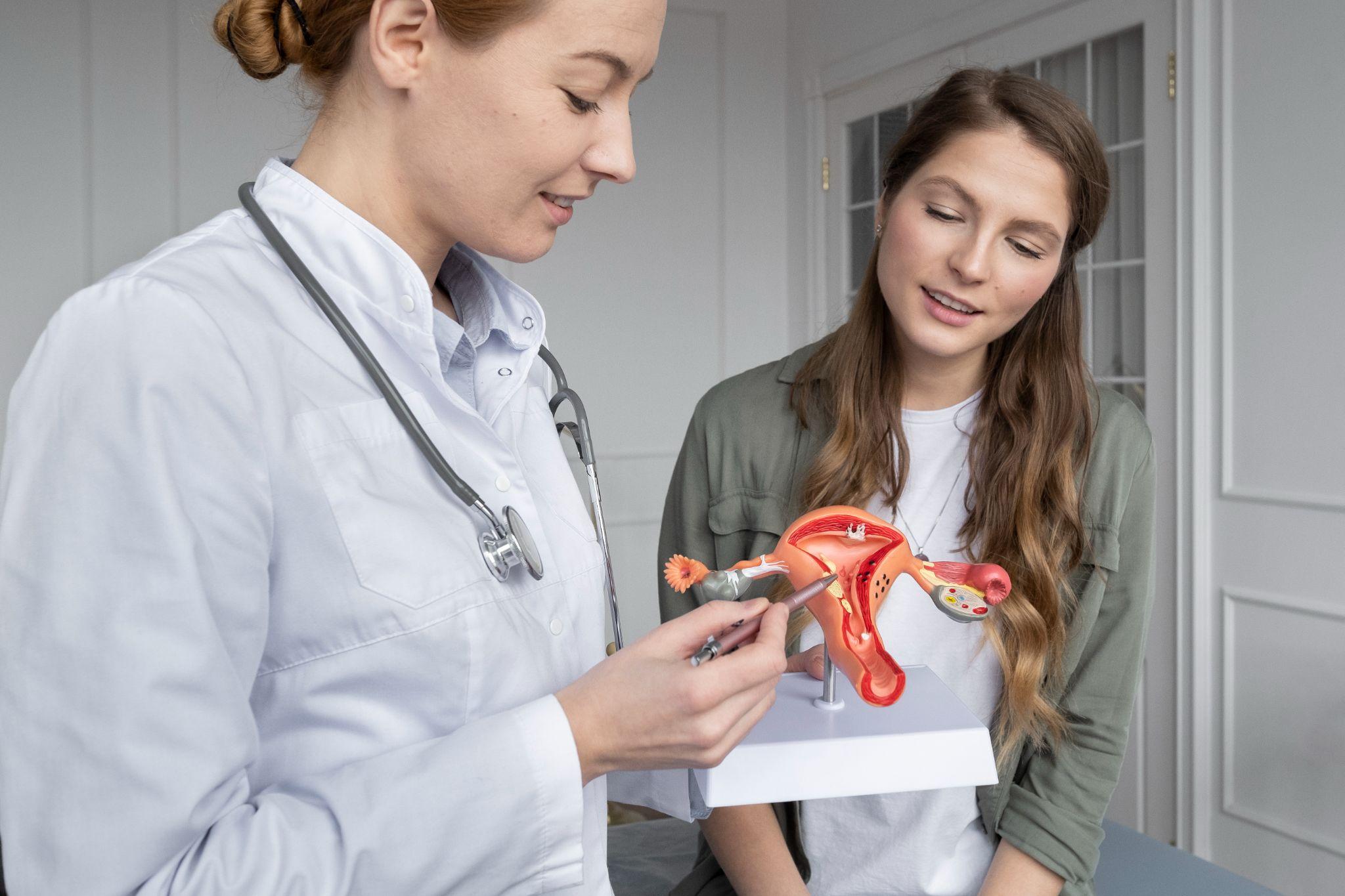
model of a female reproductive system
Cervical cancer is the fourth most common cancer in women globally, according to WHO. The cervix is the lower part of the uterus that connects to the vagina. Cervical cancer starts at the cervix as a growth of precancerous cells. It develops slowly and usually does not show any signs in the early stage. If the right measures are taken, it is easily treatable and preventable in nature. Unfortunately, not many people are aware of these simple measures.
Cervical cancers are named based on the type of cell where the cancer started. There are two main types of cervical cancer :
Early cervical cancer is hard to detect since it doesn’t usually show any symptoms. Symptoms usually appear after the cancer has spread.
On the rare chance that symptoms of early cervical cancer do occur, they may include
Most cases of cervical cancer are caused by human papillovirus, also commonly known as HPV. According to WHO, HPV is a common sexually transmitted infection which can affect the skin, genital area and throat. In most cases, our immune system clears out common HPV from our system but in some cases it gets left behind. These cases are known as high risk HPV and often lead to growth of abnormal cells that can turn into cancer cells.

doctor explaining the anatomy of the female reproductive system
Although HPV is the main cause for cervical cancer, there are many other dangers that make you more susceptible to it. Things that are a part of your daily life might be damaging your immune system and putting you at risk for cancer. Some of the most common risk factors for cervical cancer are :
Smoking is one of the major factors that increase the risk of cervical cancer. HPV infections affect people who smoke more easily . These infections paired up with a weakened immune system lead to most cervical cancers.
Having a weak immune system that is incapable of fighting infections such as HPV makes you an easy target for HPV. Not only that but pre-existing health conditions along with HPV, put you at an even higher risk for cervical cancer.
Engaging in intercourse at an early age can put you at a greater risk of getting HPV which causes cervical cancer.
Presence of other sexually transmitted infections, also known as STIs, increase the risk for HPV, which can lead to cervical cancer. STIs that contribute to this include herpes, syphilis, chlamydia, gonorrhea, and HIV/AIDs.
Though incredibly common, cervical cancer is also easily preventable. Some ways to reduce your risk for cervical cancer are:
You can consult your doctor regarding the HPV vaccination. Receiving proper vaccination for HPV infection may reduce your risk for cervical cancer and any other HPV-related issues.
Taking time to prevent sexually transmitted infections can reduce your risk for cervical cancer. Limiting the number of sexual partners you have and using condoms is included in this practice.
Being updated on your health condition via regular check-ups may help you catch any signs of cervical cancer early. This also promotes overall health to be optimal.
Smoking is a high risk factor for HPV. Not smoking can help you avoid cervical cancer and other damaging health problems.
Frequently Asked Questions (FAQs)
1. What is cervical cancer?
Cervical cancer is the type that develops the on cervix, which is the lower part of the uterus .
2. What are the causes of cervical cancer?
The main cause of cervical cancer is human papillovirus, also known as HPV. The infection leads to the formation of abnormal cells on the cervix that can turn into cancer cells.
3. What are symptoms of cervical cancer?
Cervical cancer doesn't show any symptoms early on. Some rare symptoms consist of abnormal vaginal bleeding, watery discharge with a foul smell and pelvic pain during or after intercourse.
4. What are the risk factors of cervical cancer?
Risk factors for cervical cancer include smoking, unsafe and early intercourse, other STIs and a weakened immune system.
5. How can one prevent cervical cancer?
Preventive measures for cervical cancer include not smoking, HPV vaccination, safe intercourse practices and routine check ups with your gynaecologist.
6. Is cervical cancer treatable?
Yes, cervical cancer is highly treatable and also easily preventable.
We offer expert care across key specialties, including Medicine, Cardiology, Orthopaedics, ENT, Gynaecology, and more—delivering trusted treatment under one roof.

Dr. Abhishek

Dr. Megha

Dr. Divyajyoti Sharma

Dr. R.C. Sharma
Prakash Hospital Pvt. Ltd. is a 100 bedded NABH NABL accredited multispecialty hospital along with a center of trauma and orthopedics. We are in the service of society since 2001.
OUR SPECIALITIES
Contact Us
D – 12A, 12B, Sector-33, G. B. Nagar, Noida, Uttar Pradesh 201301
+91-8826000033

© 2025 All rights reserved.
Designed and Developed by Zarle Infotech